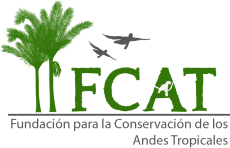Fall 2021
The cooler weather is here and everyone in the lab has been busy! The semester got off to a great start but then Hurricane Ida came through and disrupted our flow a bit. Nevertheless, we all bounced back and are keeping busy with our classes, research, and teaching.
This semester we welcomed some new undergraduates to the lab including: Mary Elizabeth Barrow, Jack Cohn, Olivia Davison, Sloan Livaccari, and Maggie Millar. We also welcomed Master students Galen Dolkas, Chengkai (Kai) Guo, Vishal Narayan, and Thalia Williamson! Tanner Mazanec, Kat Perkins, and Katie Rompf are all making progress on their Master’s. And last but certainly not least, Judith Santano has joined us as a PhD student from California, with support from a NSF Graduate Research Fellowship she was awarded!
The PhD students have all had a lot on their plates but are doing a great job with work-life balance.
Sarah Khalil successfully defended her PhD thesis on red-backed fairywren coloration and is getting ready to begin her NSF-funded postdoc at Cornell. She also presented her work on the genomics of color variation in fairywrens at two conferences this summer – the American Ornithological Society, and the annual Evolution conference, where she won a W. D. Hamilton Award for Outstanding Graduate Student Presentation! She also spent two weeks in Ecuador TAing the tropical field ecology course with Jordan, where she taught and lead a group of undergraduate students through a project on catching birds. She will return in summer 2022 as an instructor of record on the course.
John Jones’ dissertation is starting to take form as he has been busy writing and teaching since our last update. His first chapter is currently in press with Ecology and Evolution and his second chapter is in review in Behavioral Ecology. He plans on submitting his third chapter soon to Animal Behaviour; fingers crossed! John also learned a new (to him) technique to analyze color variation over the summer that models color perception from their eyes; this approach takes center-stage of his fourth and final chapter, exploring if and how female aggression is correlated with male plumage coloration in both white-shouldered and red-backed fairywrens. Finally, John is applying for a few postdoctoral fellowships as he considers his next steps – insert shameless plug to reach out to him if you’re a PI looking to hire!
Kaushik Narasimhan had a busy summer, and his fall is shaping up to be very busy as well. He spent the summer getting ready for a long field season in Ecuador and, after some delays due to weather, finally made it. He plans to harvest his beloved seeds (now seedlings) from his seedling survival experiment – all 2,000 of them! – and gather the last bit of data for his 3rd chapter. He is also spearheading the implementation of new project, funded by an NSF RAPID grant awarded to Tulane professor Dr. Sunshine Van Bael , that aims to test seed survival in a similar way to his 3rd chapter, but with many more tree species found in Ecuador. He is also assisting in a forest restoration projected and working on a number of manuscripts!
Annelise Blanchette spent her summer collecting brown anoles for use in cognition and locomotor performance trials. She also learned how to perform a brain dissection and collected anoles to dissect for transcriptome analysis. In the midst of field and lab work she also trained for and ran a half marathon (her 6th – she kicked butt). She wrapped up most of her work for this season and is currently piloting some new cognition methods to try out in the spring and working on data analysis in close collaboration with co-advisor Dr. Alex Gunderson.
Mike Ellis defended his prospectus in the spring and traveled around the country while working remotely (and birding). In July, he began his Fulbright fellowship in Ecuador, and he has been working in the field ever since. He is also working on two manuscripts, one of which is in review and the other is soon to be submitted.
Luke Anderson spent the summer doing fieldwork in Ecuador. Along with a team of Tulane students, he was tracking white-bearded manakin movement, gathering genetic samples, mapping fruit distributions, and monitoring male display activity. He also served as a teaching assistant for the undergraduate field course at FCAT. He will be returning to Ecuador this semester and is looking forward to gathering more data, improving his Spanish, and playing Ecua-voley with the FCATeros.
Judith Santano joined the lab as a new Ph.D student. Judith graduated from Stanford University and is excited to continue exploring and developing her passions for community ecology, community-based conservation, and environmental education in the Karubian lab! She spent the summer getting a jump start to her Ph.D. by joining Luke Anderson for his field season at FCAT in Ecuador studying how the distribution of food resources impact the mating behavior of White-bearded Manakins. This semester she’s focusing on learning as much as she can about ecology and making New Orleans her new home.
Jordan was promoted to full Professor at Tulane University and received a Fulbright Fellowship for research and training in Ecuador. He also received grants from NSF for work on the factors that determine abundances of South American palm trees with Dr. Paul Fine, Dr. Miles Silman, and Dr. Luke Browne, and for work on how soil microbial communities mediate seedling survival with Dr. Sunshine Van Bael. He enjoyed traveling to Ecuador over the summer with family, friends and colleagues to teach the field biology course at the FCAT station.
Read More


